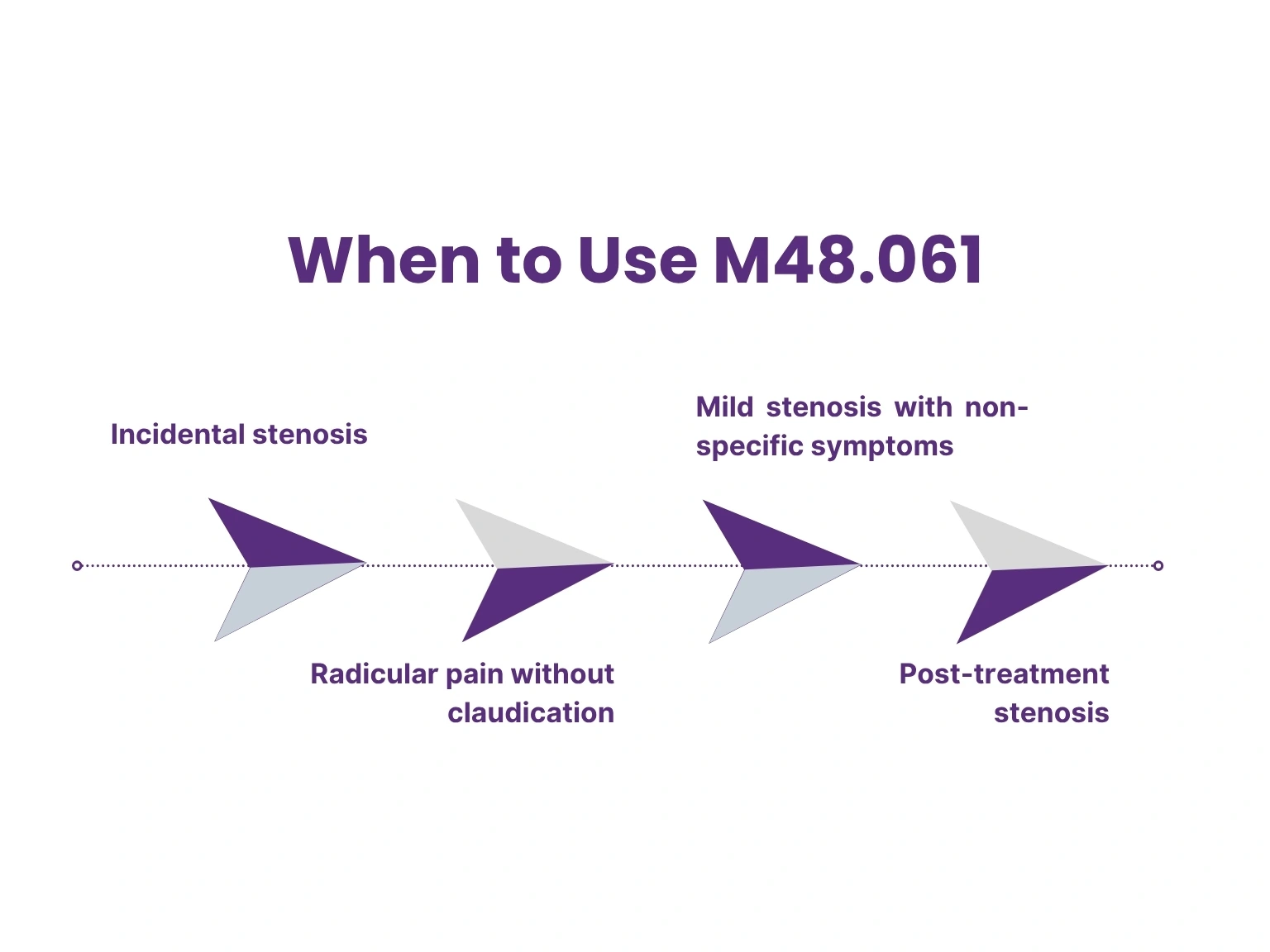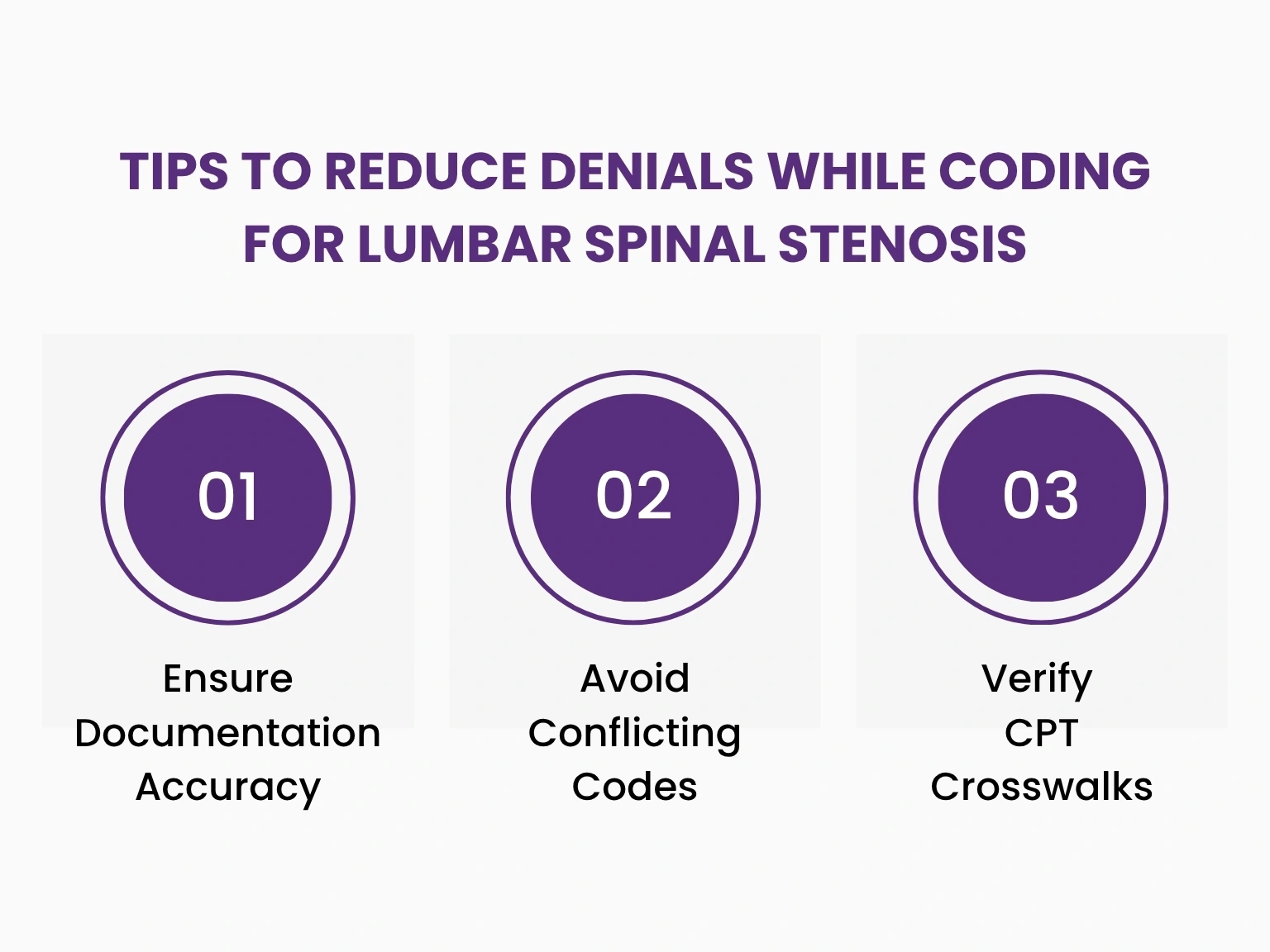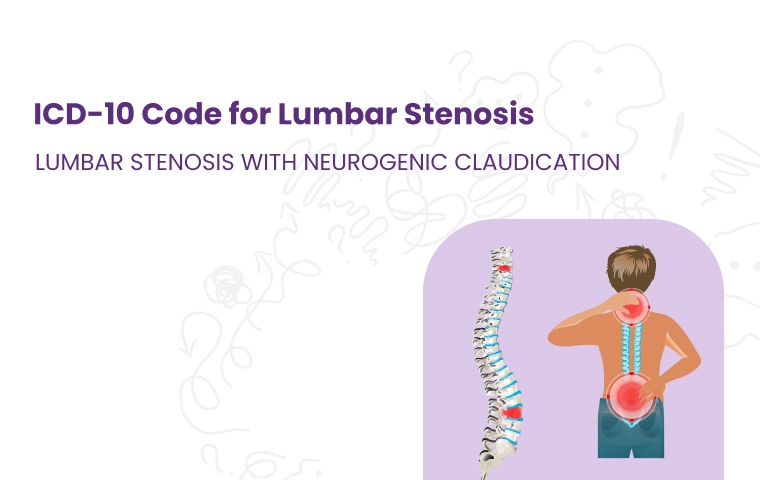Lumbar spinal stenosis represents one of the most frequently encountered degenerative spinal conditions in clinical practice, particularly among aging populations. When it comes to conditions like lumbar spinal stenosis, ICD-10 guidelines have evolved to require greater specificity, particularly regarding the presence of neurogenic claudication.
The primary ICD-10 classification for spinal stenosis of lumbar region ICD 10 resides within category M48.06. However, contemporary ICD-10-CM standards require greater specificity than simply identifying the anatomical location.
This comprehensive guide will systematically examine the relevant ICD-10 codes for lumbar spinal stenosis, with particular emphasis on M48.061 diagnosis code and M48062 diagnosis code (M48.062).
We'll explore official coding guidelines, documentation requirements, clinical considerations, and best practices that enable healthcare providers to code this prevalent condition with precision and confidence.
The Evolution of Lumbar Stenosis Coding Specificity
Within the ICD-10-CM classification system, lumbar spinal stenosis falls under the broader diagnostic category M48.06, which designates "spinal stenosis, lumbar region." However, healthcare providers and coders must understand a critical evolution in this coding category: as of the 2018 ICD-10 update, M48.06 is no longer a billable code when used independently.
This significant change was implemented to enhance diagnostic specificity and clinical accuracy. The single lumbar stenosis code underwent what coding professionals describe as a "split" dividing into two more granular codes that capture a clinically meaningful distinction: whether neurogenic claudication is present or absent.
This update was enthusiastically welcomed by spine surgeons and coding professionals alike, as it represented a substantial improvement in the ability to capture critical clinical details within the diagnosis code itself.
Current Lumbar Region Stenosis Code Structure
According to current ICD-10-CM code definitions, the lumbar region stenosis codes are structured as follows:
M48.061 – Spinal stenosis, lumbar region without neurogenic claudication
M48.062 – Spinal stenosis, lumbar region with neurogenic claudication
The code M48.06 itself now functions essentially as a non-billable parent category that mandates selection of one of the specific sub-codes listed above.
In various coding resources and practice management systems, you may encounter these specific codes written without the decimal notation, for example, M48062 diagnosis code, which corresponds to M48.062. Both representations refer to the same diagnostic entity.
ICD-10 Code M48.061( Lumbar Spinal Stenosis Without Neurogenic Claudication)
M48.061 represents the ICD-10-CM diagnosis code for lumbar spinal stenosis without neurogenic claudication. This code should be selected when a patient presents with confirmed spinal canal narrowing in the lumbar region but does not exhibit the characteristic neurogenic claudication symptom complex.
In practical clinical terms, assignment of M48.061 indicates that the patient's lower extremity symptoms present are not specifically exacerbated by ambulation or standing and relieved by sitting or spinal flexion.
Alternatively, it may indicate that such classic neurogenic symptoms have not been documented in the medical record, even if other manifestations of stenosis exist.
When to Use M48.061
Use this code when lumbar spinal stenosis has been confirmed as the diagnosis through clinical evaluation and imaging studies, and the provider has either ruled out neurogenic claudication or has not observed these specific symptoms.

Clinical scenarios appropriate for M48.061 include:
-
Incidental stenosis: Spinal canal narrowing discovered on imaging performed for unrelated reasons, without corresponding neurogenic symptoms
-
Mild stenosis with non-specific symptoms: Patients with lumbar stenosis who experience general low back pain but no characteristic leg pain with ambulation
-
Radicular pain without claudication: Patients whose primary complaint is nerve root pain in a specific dermatomal distribution rather than diffuse leg discomfort with walking
-
Post-treatment stenosis: Residual canal narrowing after surgical intervention, documented but asymptomatic or causing only localized symptoms
Documentation Requirements and Coding Strategy
From a documentation and coding perspective, if clinical notes simply state "lumbar spinal stenosis" without any mention of claudication symptoms, the safest and most compliant coding approach is to default to M48.061 (without neurogenic claudication). This conservative approach aligns with fundamental coding principles: assign only what is explicitly documented.
Coding guidelines emphasize an important principle: you should not assign the "with claudication" code unless the provider's documentation clearly and unambiguously indicates neurogenic claudication symptoms.
According to coding experts, "If there is no indication of ambulatory issues or other signs of neurogenic claudication, you'll assign the code for lumbar stenosis without neurogenic claudication."
In straightforward terms: absence of documented neurogenic symptoms = M48.061. This places substantial importance on thorough clinical documentation. Providers should explicitly note when neurogenic claudication is absent (or simply not present among the patient's symptom complex) to justify and support the use of M48.061.
Code History and Current Status
M48.061 diagnosis code was introduced in the ICD-10 updates that became effective October 1, 2017, as one of the new specific codes created when the original M48.06 category was subdivided. Since its introduction, there have been no changes to this code's definition through the 2024-2025 update cycles. The code remains active, and its clinical description and application guidelines remain unchanged.
Compliance and Reimbursement Considerations
Ensuring you use M48.061 instead of the unspecified parent code M48.06 is absolutely critical for coding compliance and appropriate reimbursement. Using the unspecified code M48.06 alone for lumbar region stenosis is no longer accepted under current ICD-10-CM guidelines and will likely result in claim rejections, payment delays, or requests for additional documentation.
Most payers' claims processing systems are programmed to identify and flag unspecified codes when more specific alternatives exist. This automatic scrutiny means that claims submitted with M48.06 instead of M48.061 or M48.062 may be returned for correction, creating administrative burden and delaying revenue cycle processes.
ICD-10 Code M48.062 ( Lumbar Spinal Stenosis With Neurogenic Claudication)
M48.062 is the ICD-10-CM code designated for lumbar spinal stenosis with neurogenic claudication. This code should be selected when the patient's lumbar stenosis is accompanied by the classic neurogenic claudication symptom presentation.
As previously discussed, neurogenic claudication refers to pain, numbness, tingling, or weakness in the legs or buttocks that is specifically triggered by walking or prolonged standing and characteristically relieved by sitting down or flexing the spine forward.
This symptom complex is essentially caused by nerve compression resulting from the narrowed spinal canal. One source defines it succinctly as "the symptom of pain induced by walking.
Clinical Documentation Requirements for M48.062
To appropriately and compliantly assign M48062 diagnosis code (M48.062), the physician's clinical documentation should clearly indicate the presence of neurogenic claudication. This is not a diagnosis that can be inferred or assumed; it must be explicitly documented with supporting symptom descriptions.
Key documentation elements and phrases that support M48.062 assignment include:
-
Symptom pattern description: Reports of leg or buttock pain that develops with walking or standing
-
Functional limitations: Documentation of reduced walking tolerance, such as "patient can walk only 100 yards before leg symptoms develop"
-
Relief pattern: Clear notation that symptoms improve with rest, sitting, or forward flexion of the spine
-
Ambulatory dysfunction: General difficulty walking or limitation of walking endurance directly attributed to spinal stenosis
-
Positional variation: Symptoms worse with lumbar extension (standing upright) and improved with flexion (bending forward, sitting, or using shopping cart)
Diagnostic Confirmation and Imaging Correlation
While the critical coding element is documented symptomatology, the diagnosis of neurogenic claudication is typically supported by imaging evidence. Advanced imaging studies such as MRI or CT scanning that demonstrate a narrowed lumbar spinal canal with compression of nerve roots provide objective confirmation of the anatomical basis for symptoms.
Clinical resources consistently note that neurogenic claudication is most reliably confirmed when there is both characteristic symptom presentation and corresponding imaging evidence of significant lumbar canal stenosis.
However, from a coding perspective, the documented clinical symptoms remain the primary driver of code selection. Even with impressive imaging findings, if the provider does not document neurogenic claudication symptoms, M48.061 would be the appropriate code choice.
Code Introduction and Evolution
Like its counterpart M48.061, the M48062 diagnosis code was added to ICD-10-CM as of October 1, 2017, to enhance coding specificity and clinical granularity. Its introduction represented a significant advancement in spinal stenosis coding because previously, coders had no systematic method to distinguish cases with neurogenic claudication from those without these symptoms.
Coding Best Practices for Lumbar Stenosis
1- Always Code to the Highest Specificity
-
Never use M48.06 alone(this is non-billable)
-
Choose M48.061 or M48.062 based on clinical documentation.
2- Clarify Claudication Type
-
Confirm whether it’s neurogenic (due to spinal issues) or vascular (due to PAD).
-
If unclear, query the provider before coding.

3- Don’t Forget Laterality Because It Doesn’t Apply Here
Unlike many orthopedic diagnoses, M48.061 and M48.062 do not require left/right designation. These codes apply to the entire lumbar region, regardless of side.
4- Document Functional Impact
Including the distance before symptom onset and how symptoms resolve can help justify:
-
Surgical consults
-
Imaging requests
-
Medical necessity reviews by payers
Reimbursement Considerations and Claim Denial Risk
Incorrect coding of lumbar spinal stenosis is a flag for audits, especially when symptoms or laterality are ambiguous.
1- Common Payer Triggers:
-
Using M48.06 (unspecified) on claims
-
Claim mismatch: M48.061 used, but clinical notes mention leg pain
-
Imaging or treatment (e.g., decompression surgery) doesn't match severity of coded diagnosis
Tips to Reduce Denials While Coding for Lumbar Spinal Stenosis

-
Match documentation to code exactly
-
Avoid conflicting diagnoses (e.g., using both vascular and neurogenic claudication codes)
-
Crosswalk CPT codes carefully if spinal decompression or injections are involved.
Words By Author
The distinction between M48.061 diagnosis code (without neurogenic claudication) and M48062 diagnosis code (with neurogenic claudication) is not merely an administrative detail, it represents meaningful clinical information that affects treatment planning, outcome tracking, and resource allocation.
By implementing the comprehensive coding guidelines, documentation improvement strategies, and best practices outlined in this guide, healthcare providers and coding professionals can achieve excellence in spinal stenosis of lumbar region ICD 10 coding.
If you’re struggling to align provider documentation with proper coding for spinal stenosis, our medical billing experts can help you get paid faster without risking audits.
ABOUT AUTHOR

Alexander White
As a blog writer with years of experience in the healthcare industry, I have got what it takes to write well-researched content that adds value for the audience. I am a curious individual by nature, driven by passion and I translate that into my writings. I aspire to be among the leading content writers in the world.
